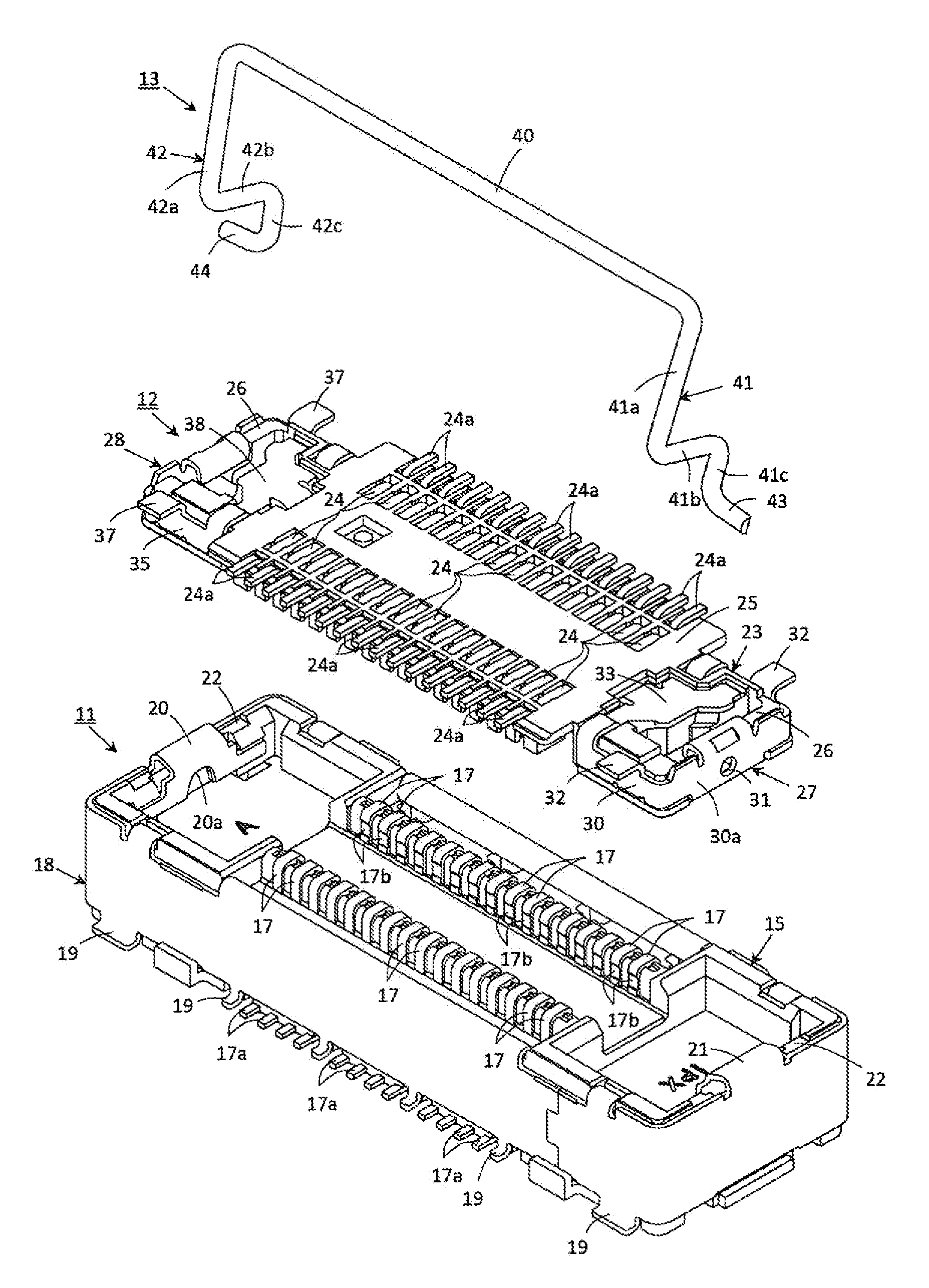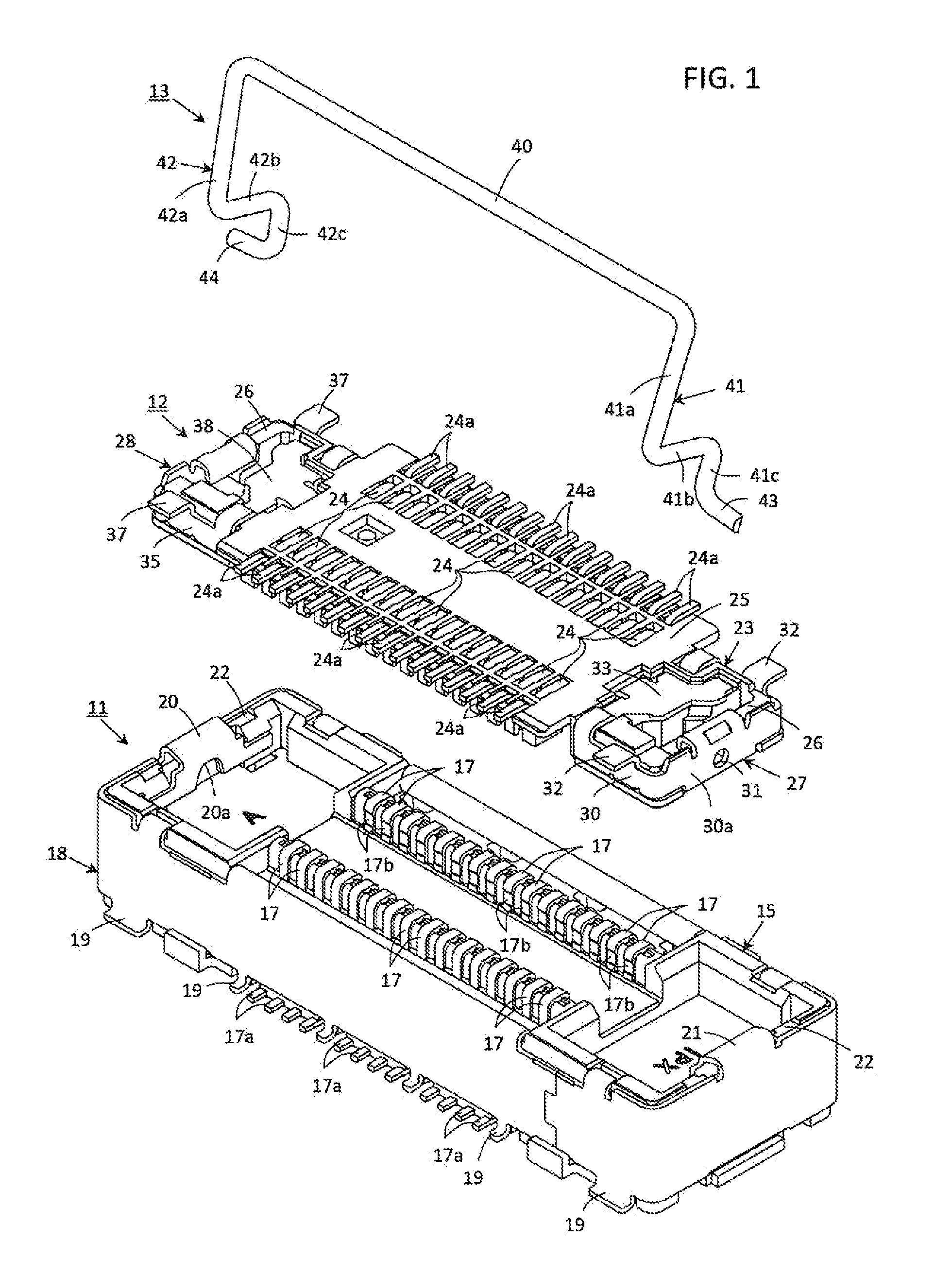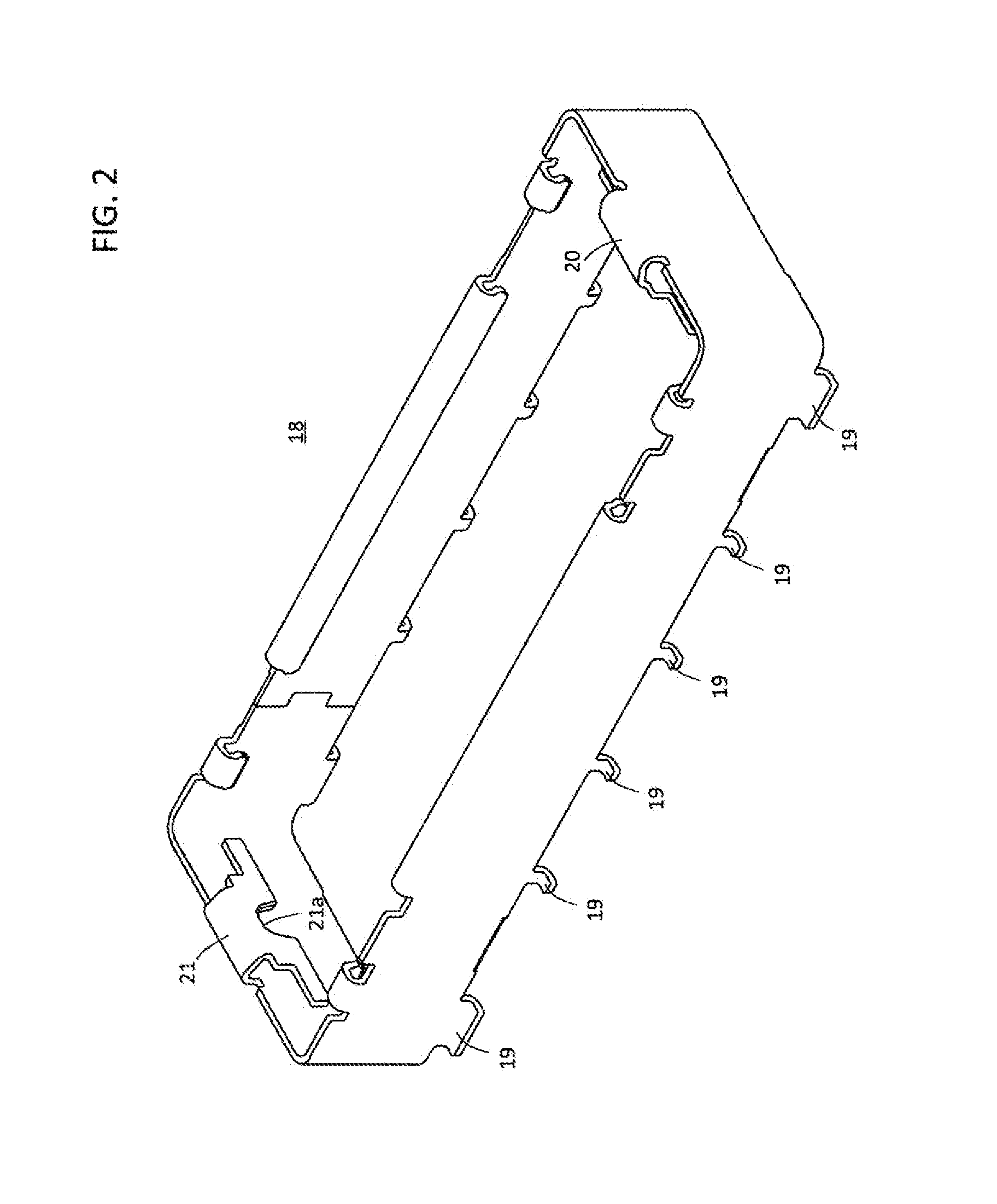Circuit-terminal connecting device
a connecting device and circuit technology, applied in the direction of coupling device connection, printed circuit, electrical apparatus, etc., can solve the problems of inferior stiffness for locking the second housing, undeclared proportion of manipulable members, etc., and achieve the effect of large stiffness, reduced weight, and large engagemen
- Summary
- Abstract
- Description
- Claims
- Application Information
AI Technical Summary
Benefits of technology
Problems solved by technology
Method used
Image
Examples
Embodiment Construction
[0062]FIG. 1 shows a receptacle type connector 11 constituting a first electrical connector, a plug type connector 12 constituting a second electrical connector and a manipulatable member 13 each included in an embodiment of circuit-terminal connecting device according to the present invention which comprises the first electrical connector, the second electrical connector and the manipulatable member 13.
[0063]The receptacle type connector 11 shown in FIG. 1 has a housing 15 made of insulator such as plastics or the like to constitute a first housing. The housing 15 is mounted on a surface of a first circuit board 16, which is imaginarily shown with chain lines in FIG. 7 mentioned later, to be attached to the first circuit board 16 when the receptacle type connector 11 is put to practical use. The surface of the first circuit board 16 on which the housing 15 is mounted faces upward in FIG. 7 (hereinafter, referred to an upper surface of the first circuit board 16).
[0064]A plurality o...
PUM
 Login to View More
Login to View More Abstract
Description
Claims
Application Information
 Login to View More
Login to View More - R&D
- Intellectual Property
- Life Sciences
- Materials
- Tech Scout
- Unparalleled Data Quality
- Higher Quality Content
- 60% Fewer Hallucinations
Browse by: Latest US Patents, China's latest patents, Technical Efficacy Thesaurus, Application Domain, Technology Topic, Popular Technical Reports.
© 2025 PatSnap. All rights reserved.Legal|Privacy policy|Modern Slavery Act Transparency Statement|Sitemap|About US| Contact US: help@patsnap.com



